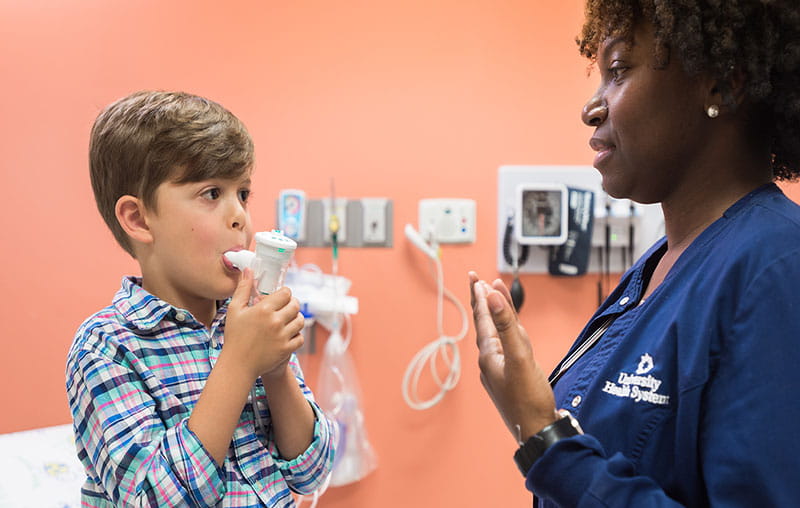Currently, more than 1,900 children are waiting for a life-saving organ transplant, and over a quarter are under the age of 5. Many of the conditions that prompt the need for transplant occur before or at the time of birth, while others result from injury or illness that leads to organ failure.
While most organs come from deceased individuals, organs from living donors can give a child immeasurable benefits such as a shorter wait time and improved results. A living donor is someone who undergoes surgery to give a kidney or part of their liver while they are still alive.
About 6,500 living donor transplants take place every year for both adults and children.
“The most important thing about living donor transplants is that, broadly speaking, they're better for the kids,” said Dr. Danielle Fritze, a transplant surgeon at University Health. “Donors don't have to be related to a child to donate, and there's a fairly broad age range where people can have high-quality organs that would serve a child well.”
Benefits of Living Donor Kidney Transplant
Living donation is the fastest way to get an organ to a child who needs it. Living kidney donation is the most common type of living donor transplant. People can live a normal life with only one kidney, because the remaining kidney will increase in size to compensate.
“Living donor kidneys, on the whole, last longer and function extremely well from the very beginning,” says Fritze. “They’re much more likely to function while we’re still in the operating room, whereas deceased donor kidneys can take a few days or weeks to start to work.”
Transplant can also occur before the child starts dialysis, which can have unpleasant side effects like nausea, vomiting, low blood pressure, muscle cramping and itchy skin.
Benefits of Living Donor Liver Transplant
In a living donor liver transplant, a portion of the liver is removed from the donor and placed in the recipient. The remaining part of the liver is enough to maintain normal function and grows to normal size over the next few months.
“Similar to kidney transplants, living donor liver transplants tend to work very well right away,” Fritze says. “And in the long term, we know that kids who get living donor liver transplants have better survival at one and five years post-transplant.”
Living donor liver transplant recipients also have lower rates of graft failure – a serious complication that requires retransplantation – at one, five and 10 years as compared to those who received deceased donor transplants.
Unfortunately, no equivalent for dialysis exists for liver failure, which means that securing a living donor liver can mean the difference between life and death for a child.
Become a Living Donor
In 2022, University Health led the nation in living donor kidney transplants for children.
According to the Scientific Registry of Transplant Recipients (SRTR) report published in January, the University Health Transplant Institute has above expected and national patient and conditional graft survival outcomes in the first year for pediatric patients.
Those who received a kidney or partial liver from a living donor had a 100% patient and graft survival within their first year.
Living Donor Transplants at University Health
To learn about how to become a living donor for a child in need, please visit our website.





